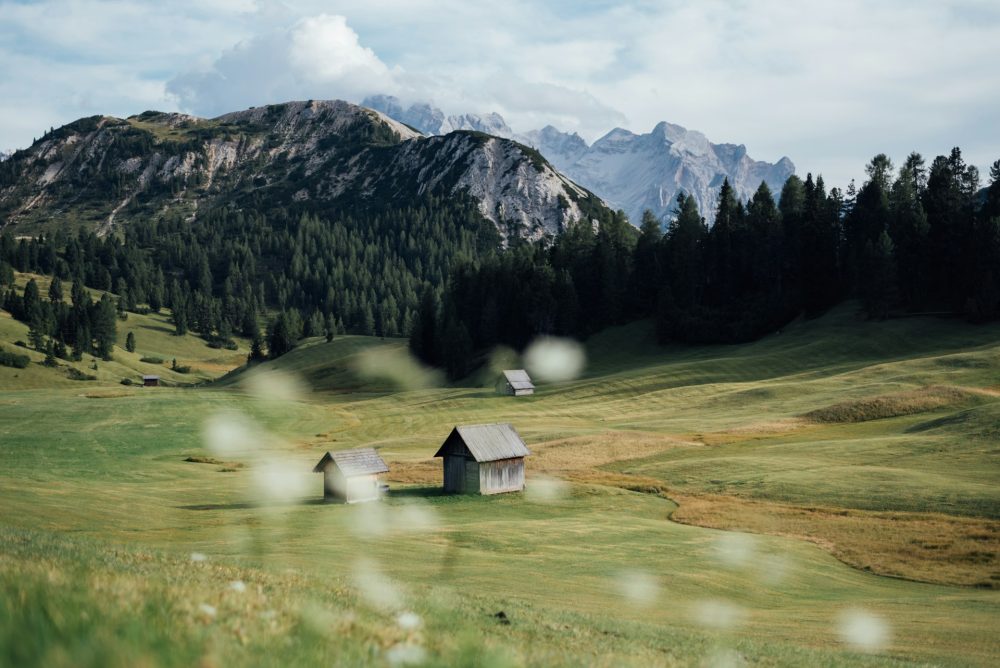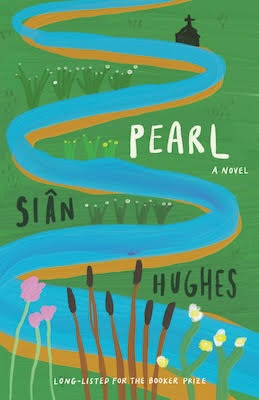Growing up in the countryside is not a romantic idea to me: it was simply where we lived. But the sense of being connected to a particular place, to feel that I have a home village, a place where my ancestors are buried and where I go to remember them, is probably no longer a common thing, at least in my country, where most people live in towns and cities.
I wrote the novel Pearl while living in my home village Tilston in South Cheshire, near the river border with Wales. I grew up in the village, and the local myths and stories that appear in the book are all ones my mother told me as a child. The skipping games are ones we sang in the village school yard, and the songs were all favourites of my mother’s. Although the novel creates its own parallel universe that runs alongside my own memories, it does borrow from a real place and time.
At the time of writing, my mother had recently died, and I had moved back to my village to look after her in her last illness. I turned back to the Medieval poem “Pearl” and to my story as a way of expressing how a landscape can come to feel inhabited with loss. Every hedgerow, every lane or seasonal change felt charged with my mother’s absence, or connected to one of her stories.
In this article, I tried to choose books to recommend where the landscape is full of emotional importance to the characters, and where the day-to-day life on farms and in villages is not romanticized, but simply told from the insider’s point of view. In all of these books the setting becomes a central character who can impose its will and its sensory immediacy in the same way a character might do. In all of them the setting has a kind of depth and richness that comes from the layers of stories and myths and memories that the characters in the stories experience as a part of being in that place.
Here are books set in the countryside where the landscape is a kind of character in its own right.
The Summer Book by Tove Jansson
Set on a tiny, rocky island, The Summer Book was Jansson’s favorite of all her works for adults. In it, an older woman artist and her granddaughter negotiate their relationship to each other and to the island where the family always spends their summer months. The place is rocky, mossy, weather-beaten and well loved by its summer inhabitants. They watch the first flowers appear, accidentally slice a worm in two, fall in and out of love with cats, observe the midges dancing in the full moon, and argue about God, the Devil, superstition, and the correct way to respond to a ‘Keep Out’ sign.
Foster by Claire Keegan
A young girl is sent to spend the summer with relatives on their farm in Ireland. The story begins with the child and her father travelling to the farm, and ends when he collects her at the end of the summer, so the child’s life before she arrives, her home, mother and siblings are all related incidentally, through her reactions to her new environment. The life of the farm, the smells, sounds and textures of the indoor and outdoor worlds, the different foods she eats, the animals they care for, the fields they tend, the behavior of the loving foster parents, are all seen from the child’s unfolding point of view, and the secret lying behind the farm’s warmth and kindness is revealed as the child uncovers it, piece by piece.
As I Walked Out One Midsummer Morning by Laurie Lee
Laurie Lee’s account of his childhood in a tiny village in Gloucestershire, told in Cider With Rosie, is full of rich sensory accounts, but this later story of his first travels through Spain as a young man trying to pay his way by playing violin and dependent on the kindness of strangers, is equally vivid, with the added sting of an outsider’s response to the poverty and oppression he observes on the eve of the outbreak of the Spanish Civil War. In one section he describes people harvesting a field as if the field of wheat was the ocean, and they are moving through it like bright fish.
Twelve Words for Moss by Elizabeth-Jane Burnett
This strange mixture of poetic prose and musical poems moves across the world observing the resilient, surprising, and ancient life of mosses. The moss becomes the narrator’s teacher as she negotiates her way through the loss of her father, and tries to absorb the reality of a world without his presence. The survival of this strange life-form and its many adaptations throughout evolution becomes her touchstone for persistence in the face of grief.
Riambel by Priya Hein
The world of Riambel is one split between rich and poor, where the same place means very different things to the different people living there. The narrator lives on the margins of a beautiful place, scratching a living as the daughter of a servant, with little hope of breaking into the parallel world of her employers. The sounds, smells, tastes and textures of the place, its different locations and the way the different characters’ worlds are tucked inside the same landscape wrap the reader in the many layers of the world of Riambel.
Boy With a Black Rooster by Stefanie von Shulte; translated by Alexandra Roesch
The countryside in this story might be medieval, or it might be dystopian, or mythic, but whatever it is, it inhabits the story as strongly as any character, and stays in the mind long after it is read. A clever, neglected boy and his pet rooster set out to solve a serious problem, spurred on by the random kidnap of a young girl in front of his eyes. He leaves the narrow confines of his home territory, and confronts the evil at the heart of the mystery. Although it has elements of fairy tale in it, the evocation of the land, the forests, tracks and villages and the day-to-day conditions of survival make it more like a post-apocalyptic quest.
Down and Out in Paris and London by George Orwell
This might be an odd choice for books about the countryside, as it starts off with life in the kitchens of various eateries in Paris, and then moves to London, but much of the second half of the book sees the narrator walking from town to town to claim a night’s lodging, part of the constantly shifting tribe of homeless men left to ‘tramp’ from place to place as they are not allowed to stay more than a night at any of the hostels along the way. Forced to live in the open air, the narrator feels all the realities of weather, hedgerow, field and lane in desperate close-up. The countryside is seen as something to survive, a series of obstacles, and a way of life. Hills are there to be climbed, trees to shelter under, the spaces between towns measured in shared tobacco and the wearing down of boot leather.
Drive Your Plow Over the Bones of the Dead by Olga Tokareczuk; translated by Antonia Lloyd-Jones
This is essentially a murder mystery set in a remote and fairly inhospitable region in the mountains on the border between Poland and the Czech Republic. The narrator is a wonderful mixture of witch, fortune-teller, animal rights activist, recluse, and incorrigible writer of letters to people in authority. There is plenty in the way of clues, misdirection, and intrigue to keep the detective fan engaged, and the setting is vivid in all its seasonal variation.
Tom Lake by Ann Patchett
Set in a hard-working cherry orchard at harvest time, this novel does not romaniticize the life and work of the countryside, even though several of its characters do just that. The day to day routine and annual pattern of farm work, its relentlessness, physical demands and uncertain returns are beautifully written. It’s a lock-down story, and a story of changing climates and changing perspectives on this from one generation to another, and a story of what it means to be at home, on the planet, and in the orchards of our childhood.
Take a break from the news
We publish your favorite authors—even the ones you haven’t read yet. Get new fiction, essays, and poetry delivered to your inbox.
YOUR INBOX IS LIT
Enjoy strange, diverting work from The Commuter on Mondays, absorbing fiction from Recommended Reading on Wednesdays, and a roundup of our best work of the week on Fridays. Personalize your subscription preferences here.

